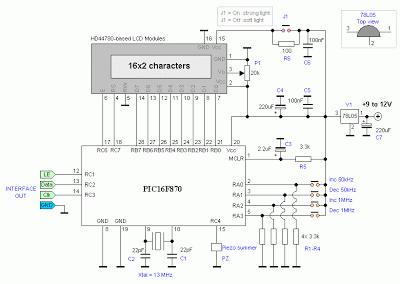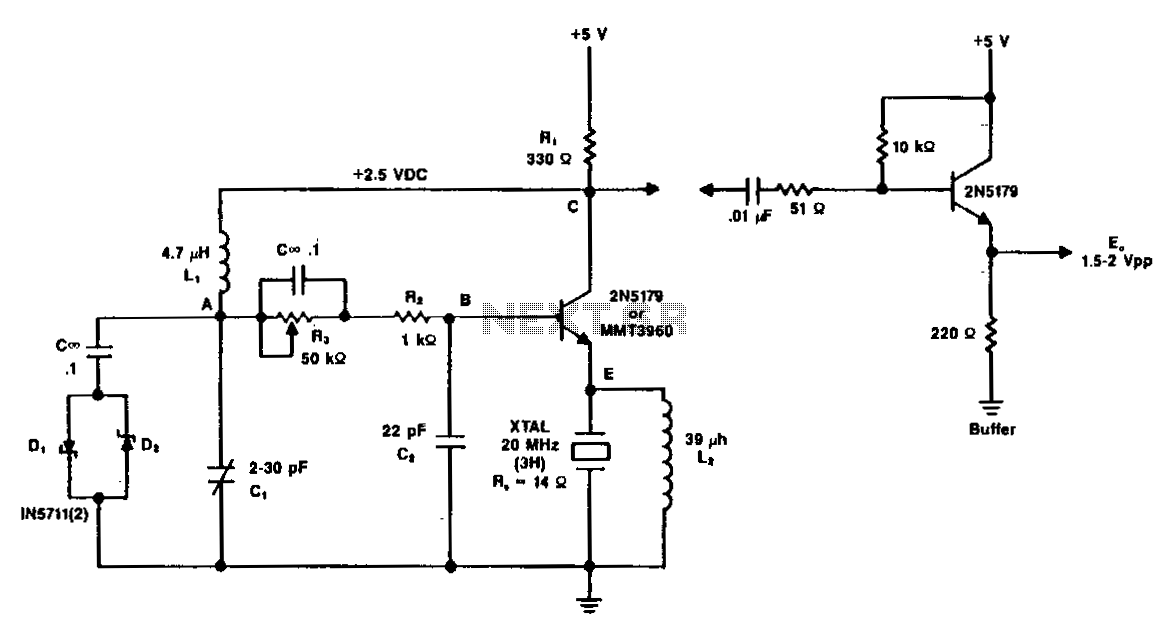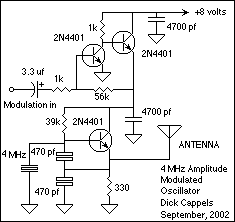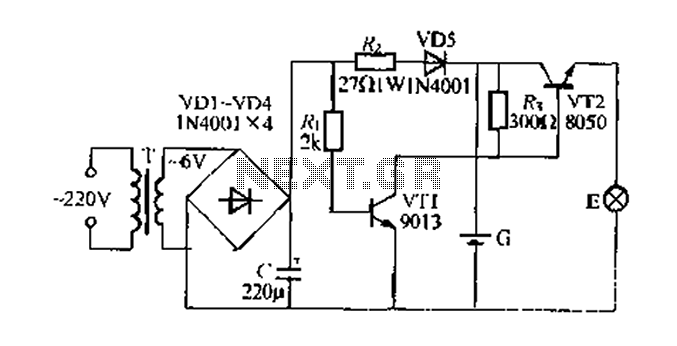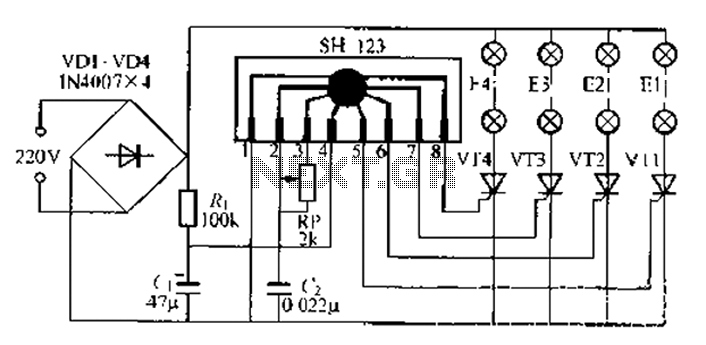
73 MHz Hallogene Radio-Controlled Lights

This circuit operates at 73 MHz and is designed for controlling halogen lights through radio frequency remote control. The primary function is to toggle the power state of a halogen lamp. When the button on the remote control is pressed, the state of the lamp will change; if the lamp is on, it will turn off, and if it is off, it will turn on. Pressing the button again will repeat this action. An LED indicator on the remote control illuminates when the button is activated. The system comprises two distinct circuits.
The described circuit utilizes a 73 MHz radio frequency to facilitate wireless control of halogen lights. The operation begins with the remote control, which is equipped with a push button switch. When the button is pressed, it sends a modulated signal at 73 MHz to the receiver circuit connected to the halogen lamp. The receiver circuit is designed to decode this signal and control the relay or transistor that manages the power supply to the lamp.
The circuit can be divided into two main sections: the transmitter (remote control) and the receiver (lamp control). The transmitter circuit consists of an oscillator that generates the 73 MHz carrier frequency. This signal is then modulated by the input from the push button, which may involve amplitude modulation (AM) or frequency modulation (FM), depending on the design.
The receiver circuit includes an RF receiver module tuned to 73 MHz, which captures the incoming signal. Upon receiving the modulated signal, the receiver demodulates it to retrieve the original control signal. This control signal is then processed to determine whether to activate or deactivate the relay or transistor that controls the power to the halogen lamp.
An important feature of the remote control is the LED indicator. This LED is connected in parallel with the push button and is activated when the button is pressed, providing visual feedback to the user that the signal has been transmitted.
Furthermore, the system may include additional components such as capacitors for filtering, resistors for biasing, and diodes for protection against voltage spikes. The design should ensure that the circuit operates reliably over the intended range of distances and that the power consumption is kept to a minimum to prolong battery life in the remote control.
In summary, this 73 MHz halogen radio-controlled light circuit effectively allows users to control the lighting remotely, providing convenience and ease of use through a simple push button interface.This circuit is 73 MHz Hallogene Radio-Controlled Lights. The purpose is to control the power state of a hallogene light by remote control. When we press the push of a remote control Botton, state lamp power will change, so, if the lamp is lit, it will be turned off and when lit, it will be turned off. If we press the button for another time, the same action will occur. When the button is pressed, the LED indicator lights on the remote control. This system consists of two separate circuits. One. 🔗 External reference
The described circuit utilizes a 73 MHz radio frequency to facilitate wireless control of halogen lights. The operation begins with the remote control, which is equipped with a push button switch. When the button is pressed, it sends a modulated signal at 73 MHz to the receiver circuit connected to the halogen lamp. The receiver circuit is designed to decode this signal and control the relay or transistor that manages the power supply to the lamp.
The circuit can be divided into two main sections: the transmitter (remote control) and the receiver (lamp control). The transmitter circuit consists of an oscillator that generates the 73 MHz carrier frequency. This signal is then modulated by the input from the push button, which may involve amplitude modulation (AM) or frequency modulation (FM), depending on the design.
The receiver circuit includes an RF receiver module tuned to 73 MHz, which captures the incoming signal. Upon receiving the modulated signal, the receiver demodulates it to retrieve the original control signal. This control signal is then processed to determine whether to activate or deactivate the relay or transistor that controls the power to the halogen lamp.
An important feature of the remote control is the LED indicator. This LED is connected in parallel with the push button and is activated when the button is pressed, providing visual feedback to the user that the signal has been transmitted.
Furthermore, the system may include additional components such as capacitors for filtering, resistors for biasing, and diodes for protection against voltage spikes. The design should ensure that the circuit operates reliably over the intended range of distances and that the power consumption is kept to a minimum to prolong battery life in the remote control.
In summary, this 73 MHz halogen radio-controlled light circuit effectively allows users to control the lighting remotely, providing convenience and ease of use through a simple push button interface.This circuit is 73 MHz Hallogene Radio-Controlled Lights. The purpose is to control the power state of a hallogene light by remote control. When we press the push of a remote control Botton, state lamp power will change, so, if the lamp is lit, it will be turned off and when lit, it will be turned off. If we press the button for another time, the same action will occur. When the button is pressed, the LED indicator lights on the remote control. This system consists of two separate circuits. One. 🔗 External reference
